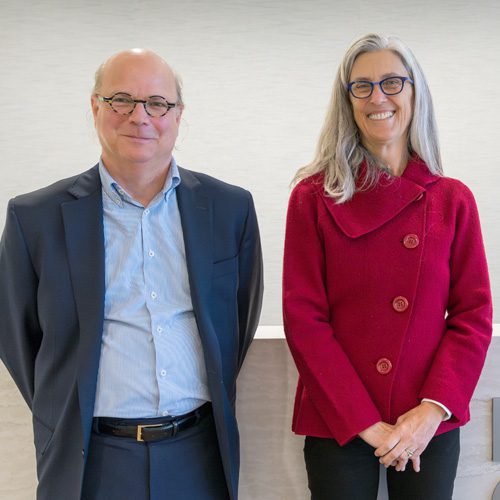Thinking Outside the Box with Illiquid Assets

By Chris Beach
Sometimes we hold onto things even when we know we’re ready to let them go. Have you been thinking about selling a second property that has become more of a burden than a memory-maker? Maybe that cabin you and your siblings share hasn’t been used in two years.
This is the year to make a move, to let go of something no longer serving you, your family, or your business, and use it to fuel positive change.
Social scientist and best-selling author Arthur Brooks has a theory about giving that resonates with me. He identifies giving as key to happiness, especially during your second curve of life (the 40s, 50s, and beyond). To ramp up giving during that time, he recommends chipping away at a reverse bucket list to manage your haves versus your wants. Based on the concept that satisfaction equals what you have divided by what you want, Brooks found that people were more satisfied not when they had more, but when they wanted less.
If ever the time was right to tackle your reverse bucket list and ramp up your giving, it’s now.
Illiquid assets—An often overlooked source of charitable capital
My mission is to connect donors with nonprofits that are making a difference in this world. In this role, I encourage donors to leverage assets they don’t always think about. While I’m regularly surprised by the amount of philanthropy that is created through illiquid gifts, I frequently meet with individuals who forget to factor such assets into their charitable giving plans. That’s why I want to test you today to consider: Do you need it? That second home, the business interest with significant capital gains, or maybe even cryptocurrency?
Imagine, for example, how the gift of a cabin you no longer use could be transformed into housing for neighbors in desperate need. Each night in Minnesota, over 6,000 youth experience homelessness. As a state, we do not have anywhere near enough beds for these young people—and there are opportunities right now to change that. That’s where you come in. Imagine turning that second home into a shelter for youth experiencing homelessness. For example, Avenues for Youth, a nonprofit that I care deeply about, is currently undertaking a campaign to build a shelter to help young people in our community. Can you imagine what your support could make possible? You could help give kids 20 additional private, respectful spaces during a time of transition.
It takes this kind of creative thinking to meet this moment—to care for our neighbors by taking action today instead of waiting for the future.
With a Donor Advised Fund (DAF) at the Minneapolis Foundation, you can leverage all kinds of gifts—not just cash—to provide financial support to the nonprofits that align with your values and passions.
How illiquid gifts can help communities in need
For years, the Minneapolis Foundation has supported donors looking to turn illiquid assets into resources for impact. Here are some stories of the work in action.
Example 1
A donor recently came to us feeling weighed down by his second home. What was once a retreat had become a financial and emotional burden. He no longer needed the space, but was unsure what to do. At the recommendation of his estate planning attorney, we explored how that property could serve a new purpose. By donating it to his Donor Advised Fund, he more than doubled the charitable funds available to support causes close to his heart. What had once felt like a stressor is now fueling meaningful work in the community—turning a burden into lasting impact.
Example 2
The family members of a successful third-generation Minnesota business have found a meaningful way to give back—year after year—through their ownership of the family business. With the creation of an Employee Stock Ownership Plan (ESOP) to pass ownership to its loyal employees, the family has been able to donate shares of the company to their Donor Advised Funds. With each gift, they turn a portion of their business ownership into charitable resources that are supporting education, healthcare, and housing across the state. It’s a powerful model of generosity that we’ve been honored to help facilitate—bridging their legacy as business owners with their vision for stronger communities.
Example 3
When a family-owned business was sold and relocated under new ownership, a father and son turned to the Minneapolis Foundation for help. They no longer needed the commercial property that had housed their business for years, and while it was an emotional decision, they were ready to turn the page. With guidance from their tax advisor and support from our team, they donated the property to their new Donor Advised Fund, and upon the Foundation’s sale of the asset, the family transformed the legacy of that space into lasting impact. Together, they have donated over $400,000 to community organizations doing remarkable work.
The Minneapolis Foundation can help you give advised
When I was a track and field and cross-country coach, I challenged my student athletes to test the limits of their hearts and think differently about success. We must do the same to help those in need today. This means thinking outside the box to consider what’s possible. To say “yes” to letting go of the things no longer serving you. If you have illiquid assets, you can use them to make a difference in this world.
While donating illiquid assets can get confusing, know that our team can help. You can start by asking your professional advisor what assets you have today—or might have in the future—that could be donated to a DAF. Then, the Minneapolis Foundation can help you turn those assets, illiquid or otherwise, into meaningful impact.
We all need to come together to support our neighbors today. If you are a donor and want to discuss illiquid assets with us, reach out to us at GiveAdvised.org to get started.
—
Chris Beach
Senior Vice President, Philanthropic Services

